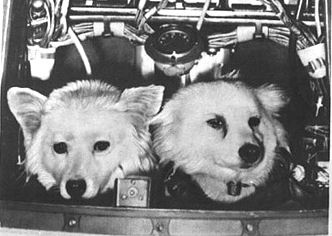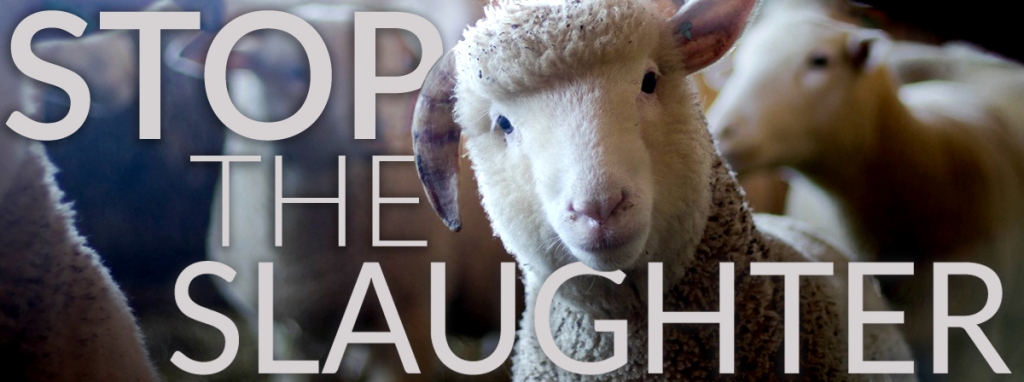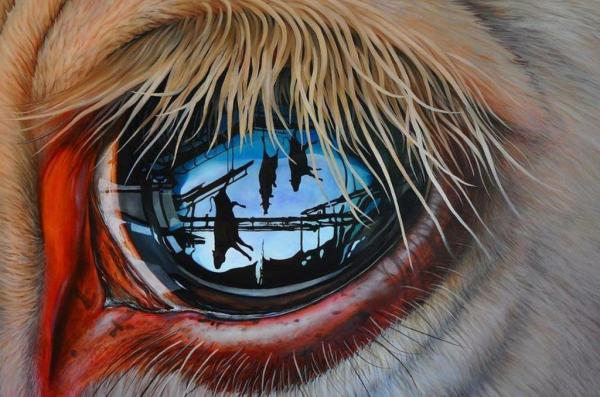Star Dogs
From
For the Love of the Dog Blog
By Andrea Rosebrock
50 years ago, on August 19, 1960, two stray dogs named Belka and Strelka started their flight aboard the Russian spaceship “Sputnik 5”. They became the first living creatures from Earth to spend over 24 hours in space before safely returning to Earth.
Soviet Scientists believed that stray dogs were the best animal for the missions. The hard life of a stray dog was preferred because scientists believed them to have better survival techniques to cope with the stress of being launched into space along with the confinement in a dark capsule.
They also preferred stray dogs over pedigree dogs. Pure-bred dogs, in their opinion, were not sturdy or intelligent enough for space travel. They had to be small – between 13 and 16 pounds. The early rockets were not powerful enough to carry heavy loads. They had to have light fur because movies were made of the dogs in flight. It was easier to see a light-colored dog in a dark capsule. They also had to be between 2 and 6 years old.
Female dogs were preferred because they had a better temperament and fit better in the specially designed space suits (complete with acrylic glass bubble helmets) and capsule restraints. Not because they had better figures, but because they didn’t need to lift their legs to empty their bladders.
The first order of business was getting all the dogs together in a social setting so they could be named. They were named according to their personality. Belka means “Squirrel” and Strelka means “Arrow”. The observation also determined which type of flight they were best suited for. Dogs with nervous personalities were chosen for sub-orbital flights. Short flights that reach space but never overcome the force of gravity. The capsule drops back to Earth. Dogs with a calm personality were used for orbital flights. Flights that overcome the force of gravity and orbit the Earth.
 Their training was harsh. They wore their space suits constantly on walks, at play, and at rest. They were kept in small “confinement capsules” for up to twenty days at a time. They had to endure spinning in centrifuges, being placed in simulators that acted like a rocket during launch, and fed nothing but a protein jelly.
Their training was harsh. They wore their space suits constantly on walks, at play, and at rest. They were kept in small “confinement capsules” for up to twenty days at a time. They had to endure spinning in centrifuges, being placed in simulators that acted like a rocket during launch, and fed nothing but a protein jelly.
At one point during their actual flight, the Soviet space doctors were alarmed when TV transmissions from the Sputnik 5 capsule showed neither dog moving during the first three orbits. Finally, on the fourth orbit, Belka vomited. And that seemed to wake both dogs out of a trance. For the rest of the flight they were more alert.
When Belka and Strelka returned to Earth they were instant celebrities. They were paraded before the world and taken on tours to meet the public.
Strelka had “pupniks” some time later and one of them, Pushinka (Fluffy) was given to Caroline Kennedy, JFK’s daughter. Pushinka became “romantically involved” with another Kennedy dog named Charlie. The result of this union was four more pupniks. Their descendents still live today around the United States.
These were courageous little dogs who knew nothing of the dangers they were trained for. Some were not lucky enough to come home. They only knew loyalty to their masters, and had no idea they were paving the way for the first human orbital flight. Eight months after Belka and Strelka, Yuri Gagarin was the first man launched into space.
Sub-Orbital Flights
Dezik, Tsygan and Lisa were the first dogs to make a sub-orbital flight on July 22, 1951. Both dogs were recovered unharmed. Dezik made another sub-orbital flight in September 1951 with a dog named Lisa, although neither survived. Tsygan was adopted as a pet by Soviet physicist Anatoli Blagonravov.
Linda and Ryzhik (Ginger) flew to an altitude of approximately 60 miles on June 2, 1954.
Smelaya (Brave) and Malyshka (Little One). Smelaya was due to make one of the flights but ran away the day before the launch. She was found the next day and went on to make a successful flight with Malyshka
Bolik and ZIB. Bolik ran away just days before her flight in September 1951. A replacement dog named ZIB (Russian acronym for “Substitute for Missing Bolik”) was an untrained street dog found running around the barracks. ZIB was quickly loaded into the space craft and made a successful flight.
Otvazhnaya (Brave One) and Snezhinka (Snowflake). Otvazhnaya and Snezhinka made a flight on July 2, 1959 along with a rabbit named Marfusha (Martha). Albina and Tsyganka (Gypsy Girl) were both ejected out of their capsule at an altitude of approximately 65 miles and landed safely.
Damka (Queen of Checkers) and Krasavka (Little Beauty) were to make an orbital flight on December 22, 1960, but their mission was plagued by a host of equipment failures. The upper stage rocket failed and the craft prematurely re-entered the atmosphere. In the event of unscheduled return to the surface, the craft was to eject the dogs and self-destruct, but the ejection seat failed and the primary destruct mechanism shorted out. The little dogs fell to Earth in the intact capsule. The backup self-destruct mechanism was set to a 60 hour timer, so a team rushed out to locate and recover the capsule. When the capsule was located, deep snow and insufficient remaining daylight prevented disarming the self-destruct mechanism and opening the capsule. The window was frosted over in the -45 degree temperatures and no signs of life were detected. When the team returned the next day they were surprised by the dogs barking as the capsule was opened. The little dogs were unharmed.
 Bars (Snow Leopard) and Lisichka (Little Fox) were also on a mission to orbit but died after their rocket exploded 28 seconds into the launch on July 28, 1960.
Bars (Snow Leopard) and Lisichka (Little Fox) were also on a mission to orbit but died after their rocket exploded 28 seconds into the launch on July 28, 1960.
Orbital flights
Laika (Barker) became the first living Earth-born creature in orbit, aboard Sputnik on November 3, 1957.
Belka (Squirrel) and Strelka (Arrow) spent a day in space aboard Sputnik 5 on August 19, 1960, before safely returning to Earth. They were the first Earth-born creatures to go into orbit and return alive.
Pchyolka (Little Bee) and Mushka (Little Fly) spent a day in orbit on December 1, 1960, on board Sputnik 6. Due to a navigation error, their spacecraft disintegrated during re-entry on December 2 and the two dogs died.
Chernushka (Blackie) made one orbit on board Sputnik 9 on March 9, 1961, with a cosmonaut dummy. The dummy was ejected out of the capsule during re-entry and made a soft landing using a parachute. Chernushka was recovered unharmed inside the capsule.
Zvyozdochka (Little Star)
made one orbit on board Sputnik 10 on March 25, 1961, with a wooden cosmonaut dummy in the final practice flight before Yuri Gagarin’s historic flight on April 12. Both were recovered successfully.
Veterok (Little Breeze) and Ugolyok (Ember) were launched on February 22, 1966, on board Cosmos 110 and spent 22 days in orbit before landing on March 16. This spaceflight of record-breaking duration was not surpassed by humans until Skylab 2 in June 1973 and is the longest space flight by dogs.
Although Russia is celebrating the 50 year anniversary of Belka and Strelka and their space dogs, all these little “Star Dogs” are an important part of world history.
They belong to us now.














































I can’t help but cringe and feel sad reading this particular article.
Those dogs never should have been used and exploited. They suffered for something we don’t need. Sad.
LikeLike
I completely agree, Marji. To this day animals are still being exploited for “space pursuit”; I will never understand how others do not recognize the taint and hell committed for human indulgence. Sad? Indeed.
LikeLike
This brings nothing but shame to the human race. Space travel will forever be tainted by this…those poor dogs…those angels. People make me sick.
LikeLike
Thank you for this article. I had no idea Russia made so many trips with dogs. It does scare me to think of them way out there, and the ones that died, very sad. The 2 little dogs inside capsule in snow, still alive…Yes humans have no ethics when it comes to animal.
LikeLike